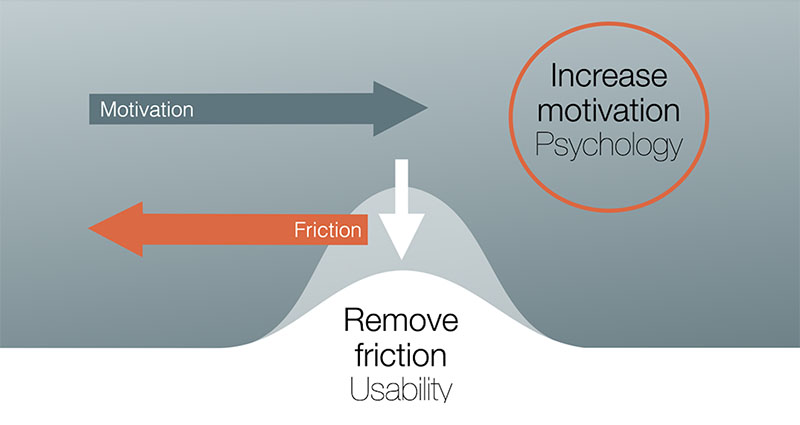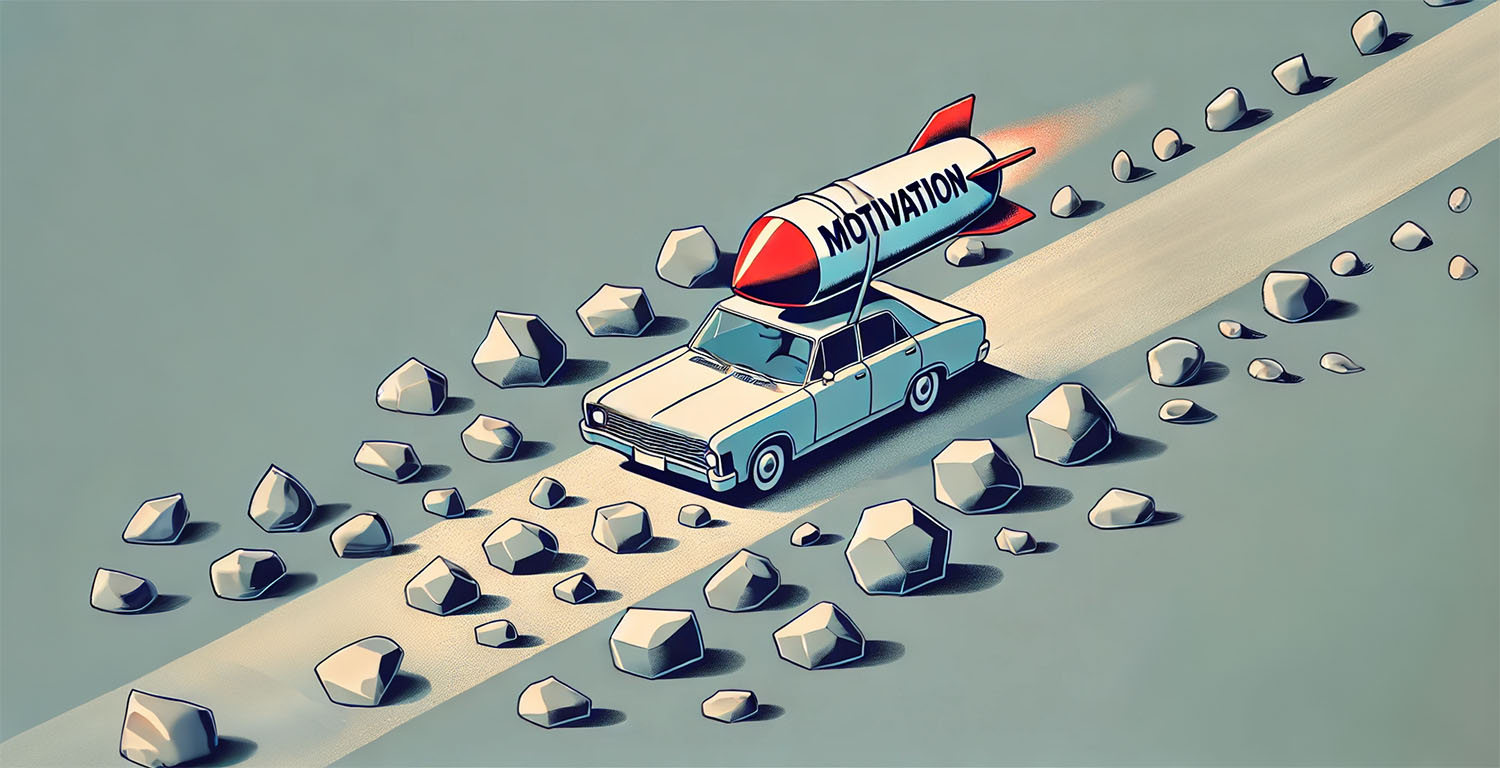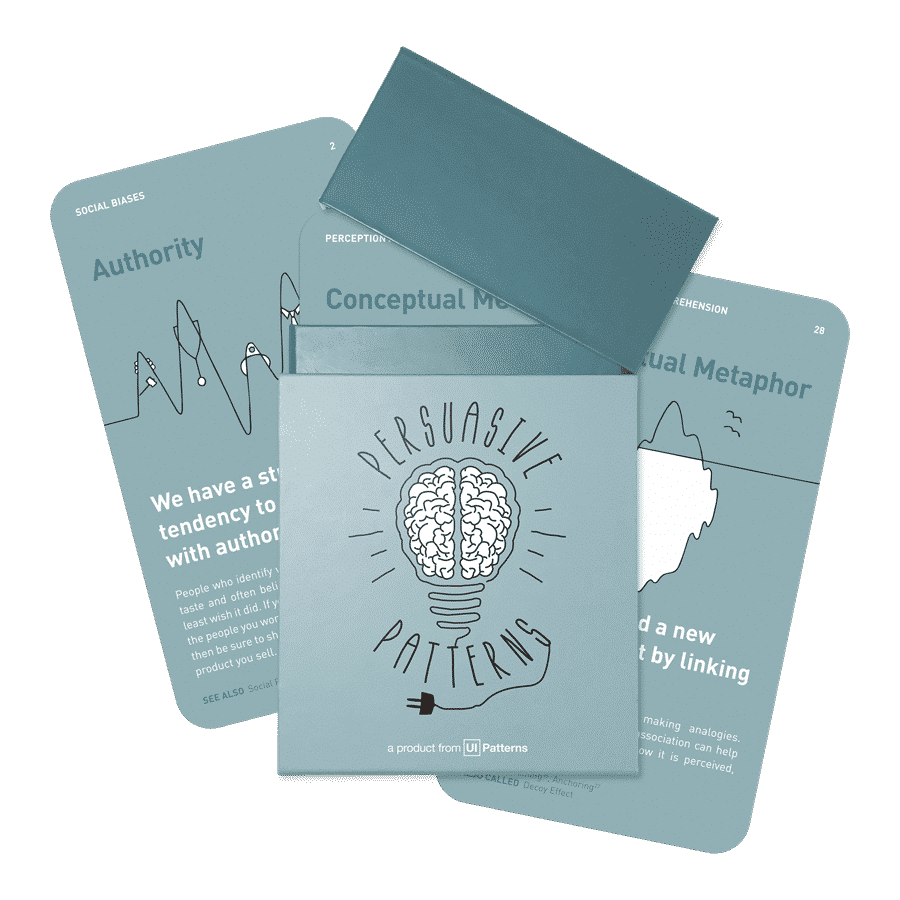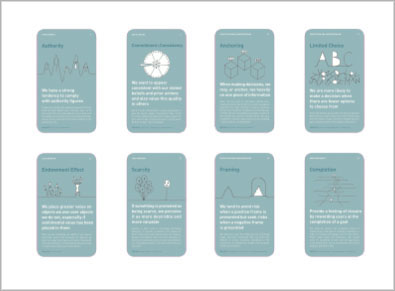Designing Beyond Usability
How motivation drives product traction beyond mere ease of use
Design for behavior change with the Persuasive Patterns card deck
Apply psychological principles to influence decisions, increase engagement, and optimize user experience.
Get your deck!When we design digital products, our first instinct is often to remove obstacles and friction. Streamlining interfaces, organizing information, and simplifying tasks are all part of this process. Usability is essential—it makes interactions smoother, lowers frustration, and helps users accomplish their objectives. However, there is a limit to what usability alone can achieve.
A great product experience stems from something more—an awareness of why people could or do care. As a result, psychology plays a key role in making your application move from being functional, reliable, usable, and convenient to being pleasurable and meaningful. Simply ensuring a product is easy to use does not guarantee deeper interest or long-term traction.
The problem with focusing on usability alone
“When technology delivers basic needs, user experience dominates.” – Donald Norman
Usability can clear the way for a good experience by eliminating troublesome interface distractions or frustrations, but the danger lies in confusing “ease of use” with actually desiring to use something. These are two very different drivers of behavior. It is entirely possible for users to breeze through an interface and still feel indifferent about returning if they do not see a compelling reason to do so.
- Eliminates friction, but not indifference. Usability reduces the bumps along a user’s path, but it does not address a user’s personal motivation or emotional investment.
- Provides efficiency without purpose. Smooth interactions help people finish tasks more quickly, yet they might never return if the underlying “why” is not evident.
- Short-term satisfaction vs. long-term traction. Even if your product is easy to learn, people might abandon it when the novelty fades unless there is a deeper reason to stay.
Two forces pulling in different directions
When users interact with a product, two primary forces influence whether they move forward or abandon the task. On one side is friction—the obstacles, complexities, or uncertainties that make progress feel difficult. It acts as a force pulling users away from their goals. On the other side is motivation—the internal or external reasons that push users to act, explore, and persist despite any bumps along the way.

Focusing on usability helps reduce friction, but it does not automatically increase motivation. Reducing friction addresses only one side of this dynamic. To create products that truly gain traction, designers must consider what compels users to keep going. By boosting motivation—through meaningful goals, clear feedback, social connection, or other psychological drivers—you add a positive force that propels users forward, making them more likely to persist and find genuine value in what you offer.
Usability vs. Desire
It is crucial not to confuse “ease of use” with wanting to use something. Smoother navigation is good, but it seldom addresses the core question of what drives people to act. If users do not find personal meaning or emotional resonance in your product, no amount of streamlining will create lasting traction.
This is where product psychology comes in. Through psychological principles, we can learn why people behave, how they form habits, and what truly motivates them to become active and consistent users of a product.
Where usability removes obstacles, motivation propels people forward. In B.J. Fogg’s Behavior Model (2009), behavior is the result of three elements: Motivation, Ability (aligned with usability), and Prompt. Even if you optimize for ability (making tasks easier), you still need motivation—an internal push or external incentive—for ongoing traction.

Donald Norman (2013) underscores that once technology fulfills basic needs, the broader user experience becomes the deciding factor in product adoption. This is where we shift from “functional, reliable, usable, and convenient” to “pleasurable and meaningful.”
- Functional & reliable. Your product must work without errors—an obvious baseline.
- Usable & convenient. The next step is making your product simpler and more accessible.
- Pleasurable & meaningful. By leveraging psychology, you create a deeper emotional link, turning casual users into loyal advocates who stick around.
Beyond the Plateau
Even the most streamlined interfaces can lead to a plateau if they lack deeper purpose. By applying psychology, you can shift from mere functionality to experiences that align with users’ intrinsic motivations. This transition can transform your product from something people can use into something they truly want to use and recommend.
Below are just some of the relevant frameworks from psychology that is applciable to product design:
-
Self-Determination Theory Developed by Deci and Ryan (1985), this theory states that people are more motivated and develop greater traction when their needs for autonomy, competence, and relatedness are met. By offering choices (autonomy), clear growth paths (competence), and social connectivity (relatedness), a product can foster an internal motivation that boosts traction.
-
Flow Mihaly Csikszentmihalyi (1990) introduced the concept of flow, describing it as a state of deep focus and immersion. Good design can facilitate flow by matching challenges to the user’s skill level, providing clear goals, and delivering immediate feedback.
-
Persuasive Design Fogg’s Behavior Model (2009) highlights the interplay of motivation, ability, and prompt. To influence behavior effectively, you must increase motivation and/or ability, then provide a timely cue.
Usability remains fundamental, but it is just the starting point. Achieving true product traction requires a deeper understanding of why people interact with your product in the first place. By applying psychological principles, you can design experiences that resonate emotionally and align with user motivations. The result? Products that not only serve a function but also inspire people to come back, explore, and share.
- The Design of Everyday Things by Don Norman
- A Behavior Model for Persuasive Design by B. J. Fogg
- Intrinsic Motivation and Self-Determination in Human Behavior by Edward L. Deci and Richard M. Ryan
- Flow: The Psychology of Optimal Experience by Mihaly Csikszentmihalyi

